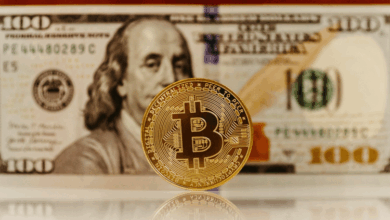Why did XRP fall? December 23 update and price analysis

XRP has faced a major pullback in recent days, with its price falling nearly 20% from an intraday high of $2.7255 on December 17 to $2.20 as of December 23, 2024. This decline comes amid broader struggles in the cryptocurrency market, where The impact of macroeconomic factors led to a sharp sell-off. Despite the absence of fundamental issues for XRP, a combination of tightening global liquidity and a hawkish Federal Reserve stance has put pressure on the entire cryptocurrency sector.
Cryptocurrency market state as of December 23, 2024
The broader cryptocurrency market is showing clear signs of weakness. As of December 23, the global cryptocurrency market cap was $3.459 trillion, down 2.4% in the past 24 hours. Trading volumes remain strong, with $193.75 billion worth of activity over the same period, but selling pressure dominates major cryptocurrencies.
- The price of Bitcoin (BTC), the largest cryptocurrency, is at $95,998.96, down 8.4% over the past week and 0.9% over the past 24 hours. Its market value is $1.9 trillion.
- Ethereum (ETH) is trading at $3,337.48, with larger losses of 15.5% during the week. It’s down 1.2% in the past 24 hours, leaving its market cap at $401.98 billion.
- XRP, which ranks fourth by market cap, is at $2.20, down 8.0% over the week and 3.2% in the past day. The 24-hour trading volume of $11.09 billion highlights active participation but insufficient demand to counter selling pressure.
- Other major altcoins, including BNB ($673.30) and Solana (SOL) ($184.55), also suffered, with Solana losing 15.9% during the week. The simultaneous decline in the market emphasizes the influence of external macroeconomic factors.
The Federal Reserve’s impact on XRP and the cryptocurrency market
The sharp decline in XRP, along with other cryptocurrencies, began immediately after the Federal Reserve’s monetary policy meeting on December 18. While the Fed cut its benchmark interest rate by 0.25 percentage points to a target range of 4.25% to 4.5%, the accompanying statement and press conference by Chairman Jerome Powell provided an unexpectedly hawkish tone.
The Fed’s updated forecasts revealed that only two additional quarter-point interest rate cuts are expected in 2025, down from the four cuts expected in September. Powell stressed that inflation, although declining, remains above the Fed’s 2% target, and that further cuts will depend on continued progress. This cautious stance suggests that liquidity conditions will remain tight until 2025, surprising investors.
The market reaction was quick. At 2:00 PM ET on December 18, the US Dollar Index (DXY) rose from 107.50 to above 108, reflecting the strength of the dollar. By December 23, the dollar index had reached 108.15, its highest level in months. A rising dollar is tightening global financial conditions, making speculative assets like cryptocurrencies less attractive.
XRP price movement
The one-month price chart of XRP highlights its dramatic reversal since December 17, when it reached an intraday high of $2.7255. XRP started to fall sharply after the Fed announcements. This decline is consistent with the broader cryptocurrency market’s response to tightening liquidity and increased risk aversion.
XRP’s 24-hour trading volume of $11.09 billion reflects significant market activity, but persistent selling pressure driven by macroeconomic factors has kept the price on a downward trajectory.
Tightening liquidity and global market dynamics
Jamie Coates, Chief Cryptocurrency Strategist at Real Vision, He said Last week on X reported that tightening liquidity is the main driver of the cryptocurrency market’s struggles. Over the past two months, global liquidity has shrunk due to shrinking central banks’ balance sheets and increased bond market volatility. Powell’s tough statements during the December 18 press conference heightened these concerns.
Coates noted that cryptocurrencies are particularly sensitive to shifts in liquidity conditions. Historically, periods of tightening financial conditions have coincided with sharp declines in speculative assets. The recent rise in the dollar index and rising Treasury yields – now at 4.54% for 10-year bonds – underscore these restrictive conditions. As risk appetite diminishes, crypto assets bear the brunt of the fallout.
Conclusion: What’s next for XRP?
XRP’s decline appears to be driven entirely by macroeconomic factors rather than asset-specific developments. The Federal Reserve’s decision to slow the pace of interest rate cuts, coupled with a strong dollar and rising yields, has created a challenging environment for speculative assets. As of December 23, the price of XRP remains at $2.20, and broader market sentiment will likely determine its short-term course.
https://media.cryptoglobe.com/2024/10/XRP-Logo-9-Oct-2024-768×439.jpeg




